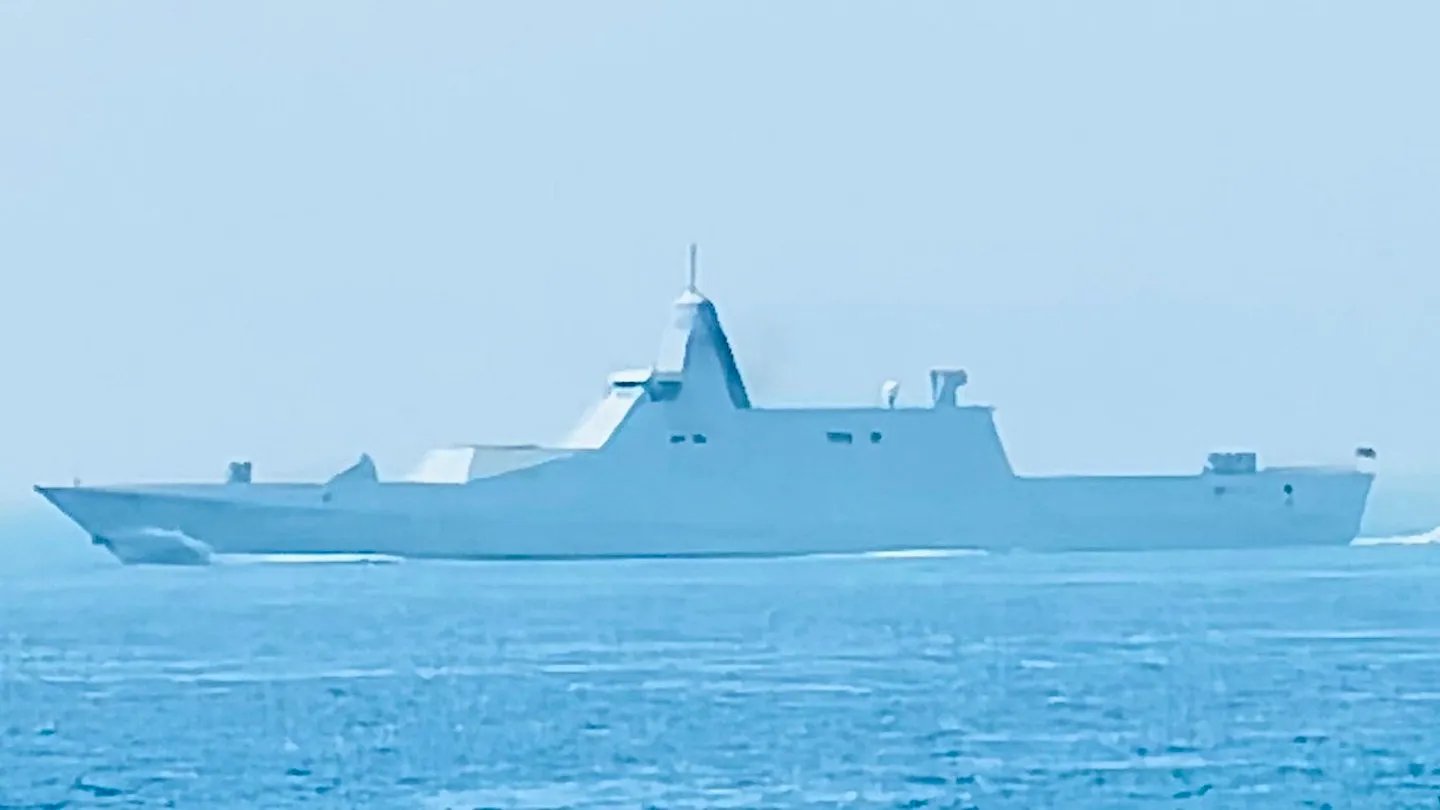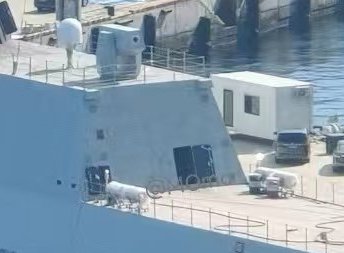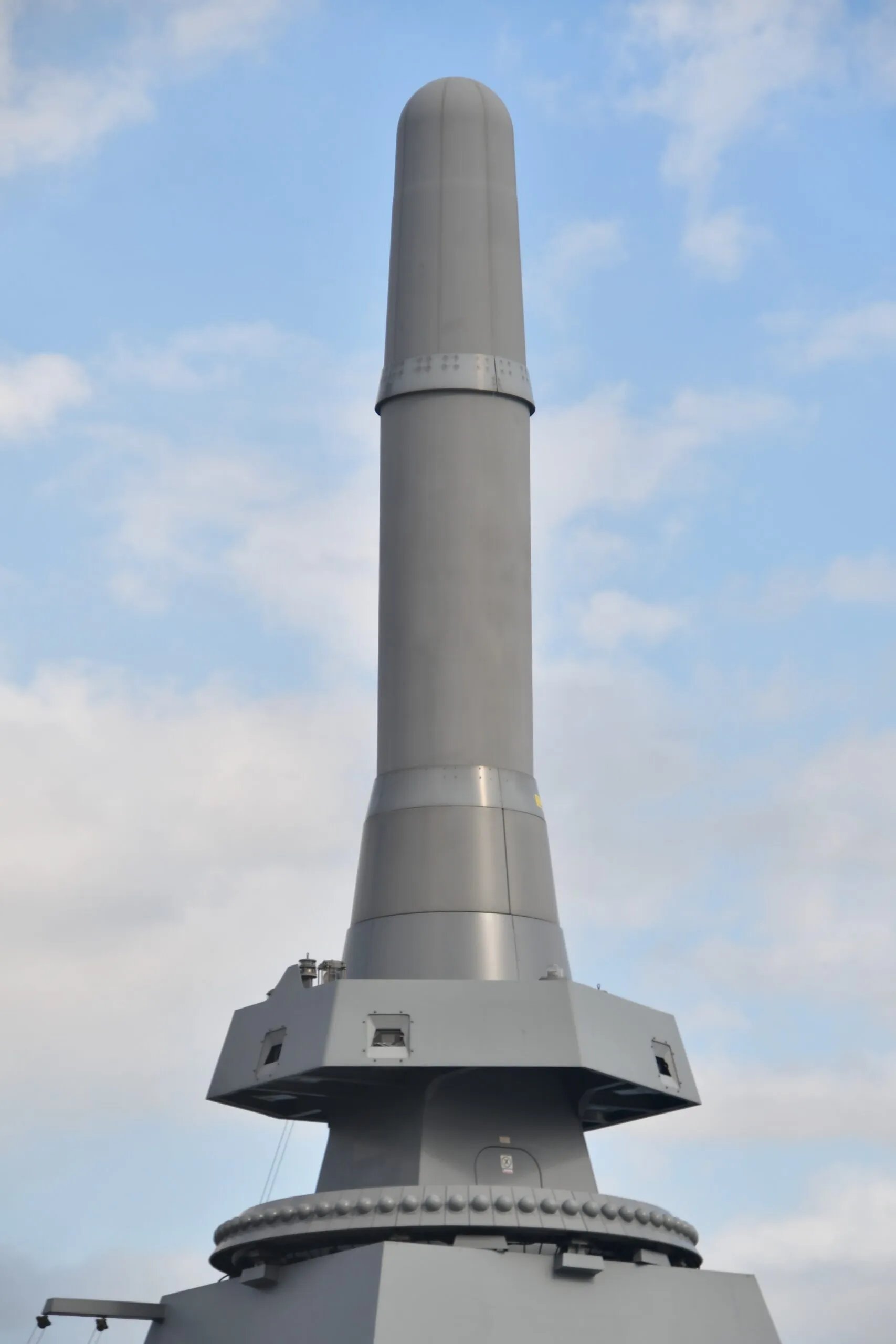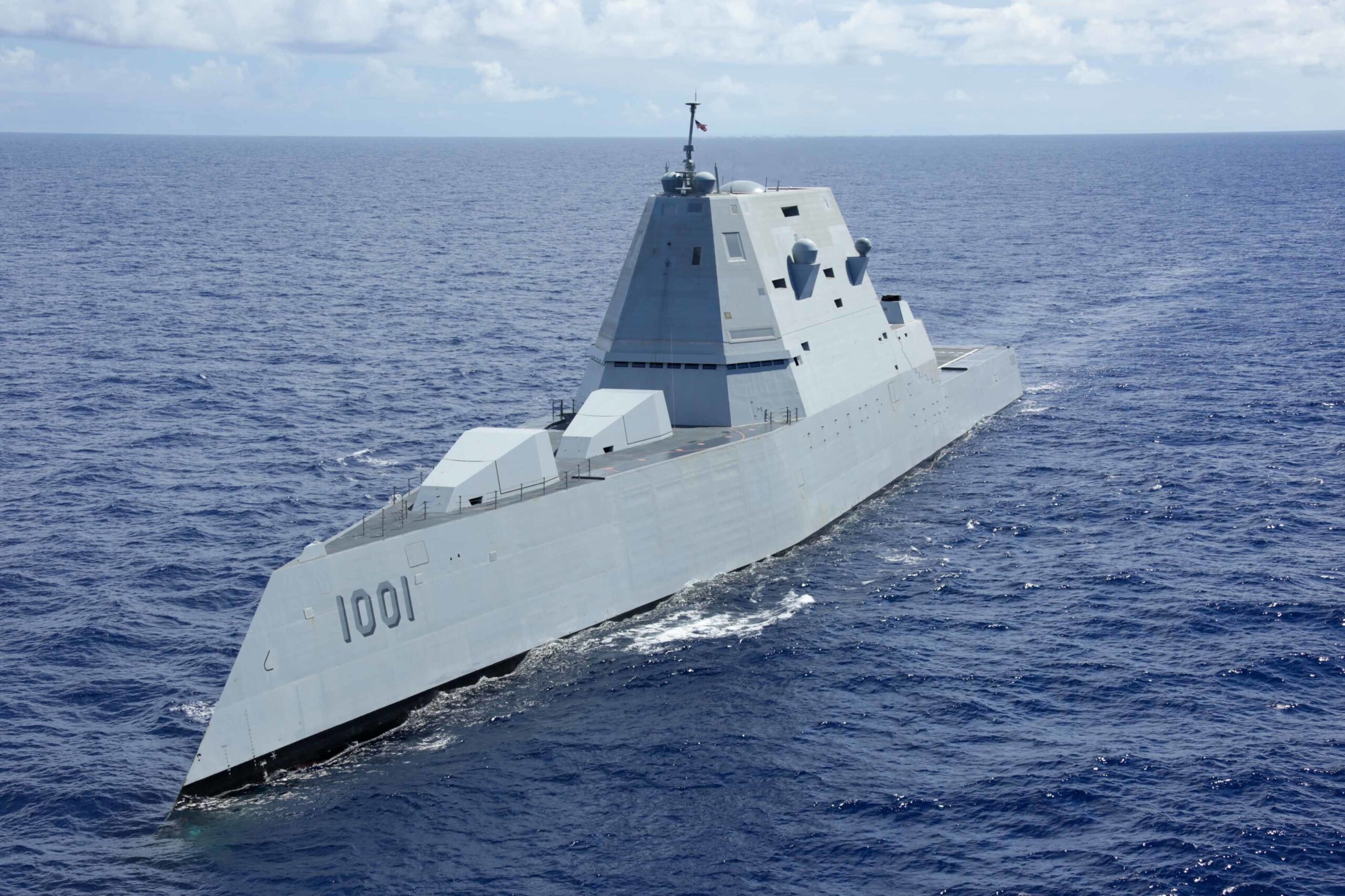A new photo has emerged of China’s mysterious stealthy corvette or light frigate, an intriguing design with low-observable features, which you can read more about here. In fact, the latest photo raises more questions than it answers, in particular, the presumed HQ-10 surface-to-air missile launcher at the rear of the deckhouse apparently being something else entirely.
The photo of the Chinese warship — the name and designation of which remain unknown — began to circulate recently on social media. It shows the vessel docked and from the rear aspect, seen from an elevated position off the left-hand side. As seen in previous imagery of the ship, it has notably smooth planar and faceted surfaces, with very little in the way of protuberances or apertures. This is in keeping with the vessel being intended to test low-observable (stealthy) features, as some have surmised.

As for what looked like an HQ-10 surface-to-air missile launcher, this is certainly an intriguing aspect. Mounted aft of the main superstructure and ahead of the flight deck is a launcher that, in previous imagery, appeared to be an HQ-10 a point-defense system that is broadly similar in form and function to the U.S.-made RIM-116 Rolling Airframe Missile (RAM). Seen from this new aspect, however, the launcher lacks the missile cells and apparently has only a single aperture.

It’s unclear what this ‘launcher’ contains, but the single aperture could suggest that it’s some kind of electro-optical device or even a directed-energy laser weapon, something that China is starting to test in a naval context. On the other hand, it might also be a simple ‘placeholder,’ designed to mimic the dimensions of the HQ-10 or a similar air defense system. For now, it remains a mystery.
There have also been suggestions, however, that the ship’s main gun, which sits concealed inside a low-observable cupola when not in use, could also be a mockup, based on the simplicity of its appearance, but again, this can’t be confirmed.
Less obvious in this new photo is the presumed vertical launch system, the existence of which was suggested in earlier imagery, based on lid hinges forward of the superstructure.
Observers have also pointed out some other possible anomalies in the appearance of the ship, including no obvious door providing access between the flight deck and hangar and the lack of a hatch for a towed sonar array. One possibility is that the vessel has no internal hangarage at all, instead with a flight deck only for more limited operations by drones and/or helicopters.

The mast atop the main superstructure, meanwhile, looks somewhat similar to the Japanese UNICORN integrated stealth antenna system, but is much less substantial, raising a question about what it might actually contain. On the other hand, a lack of obvious aerials and radar-reflecting fixtures on the superstructure or deck would also be expected for a stealthy vessel, although perhaps not quite to this degree.

Taken together, observers have suggested that the warship might be more of a proof-of-concept for a generalized low-observable vessel, or a testbed specifically for signature-reduction measures, rather than an all-round trials platform with a full array of operational-type systems. It’s also possible that more equipment will be added at a later date, but the lack of such features, or apparent provisions for them at this stage is at least puzzling.
Another possibility that has been raised — in addition to this being a test platform for stealthy features — is that the vessel is also intended to demonstrate the potential of an ‘all electric’ hybrid propulsion system. A system of this kind, as used in the U.S. Navy’s Zumwalt class destroyer, offers benefits in terms of efficiency, survivability, operating costs, and system redundancy. In general, once mastered, an all-electric propulsion system also provides more flexibility in terms of the vessel’s internal layout and allows for the copious amounts of power to be available to advanced sensors and future weaponry.

These theories would also tally with the apparent Chinese description of the vessel as a “comprehensive test platform,” based on the wording seen in a graphic shown during the launch.
Whatever its role, as TWZ pointed out when the first clear look at this ship emerged in November 2023, the existence of this design is interesting in itself, pointing firmly to Chinese interest in low-observable designs. Moreover, it may also signal longer-term plans to develop a new class of stealthy corvettes, something that would be notably useful for the People’s Liberation Army Navy (PLAN), especially for littoral warfare, for example within the highly strategic First Island Chain.
Whether ultimately intended for an operational role, or primarily expected to feed information into projects to develop other stealthy warships, the mysterious vessel has been developed very rapidly. Noted as being under construction in August 2023, it was already on sea trials before the end of the same year.
Developing and manufacturing vessels at speed is another trademark of China’s military shipbuilding capacity, the scale and scope of which are impressive by any measure. With that in mind, we may well not have to wait long to see more stealthy designs emerge from Chinese shipyards.
Contact the author: thomas@thewarzone.com
